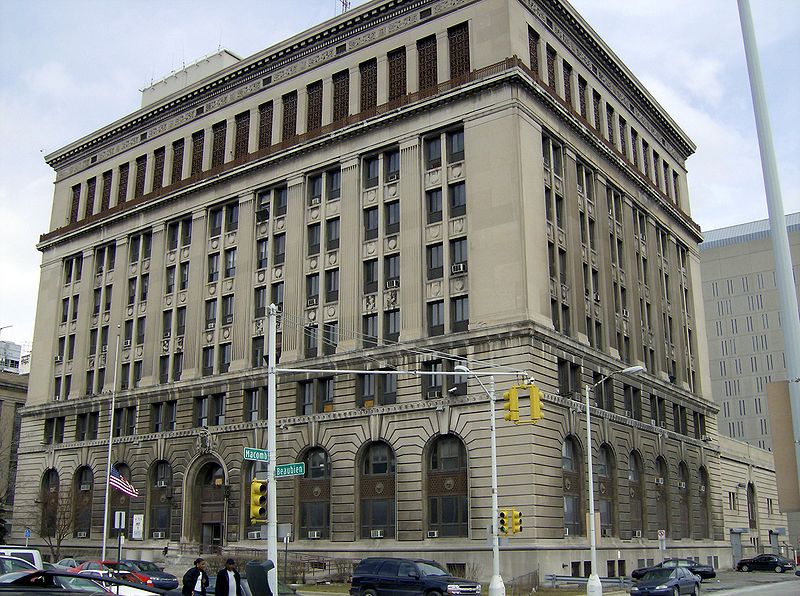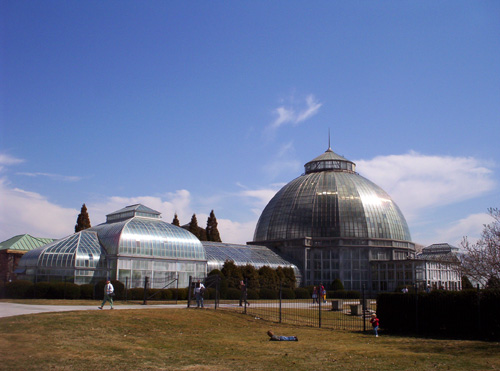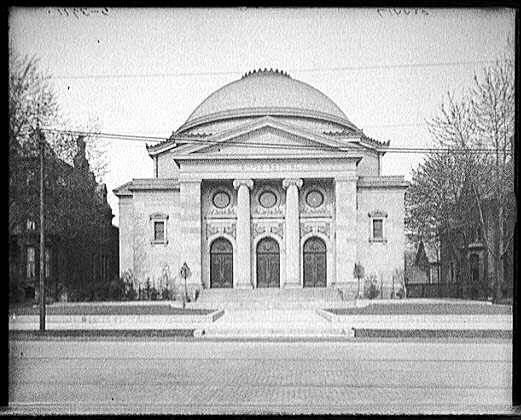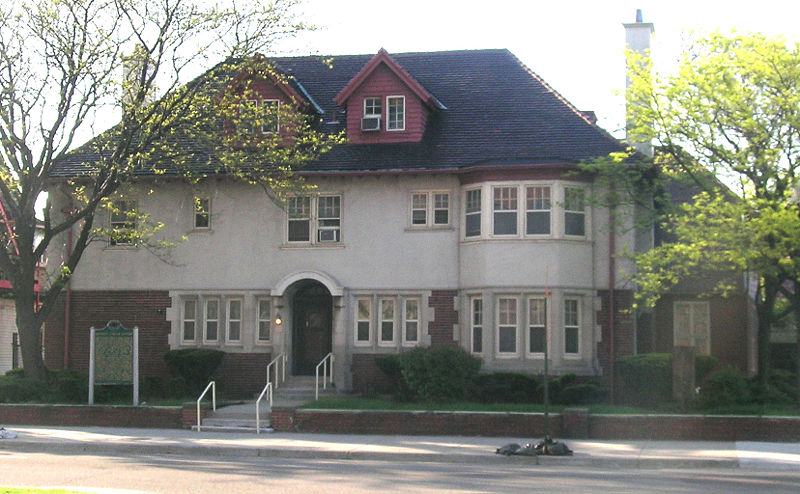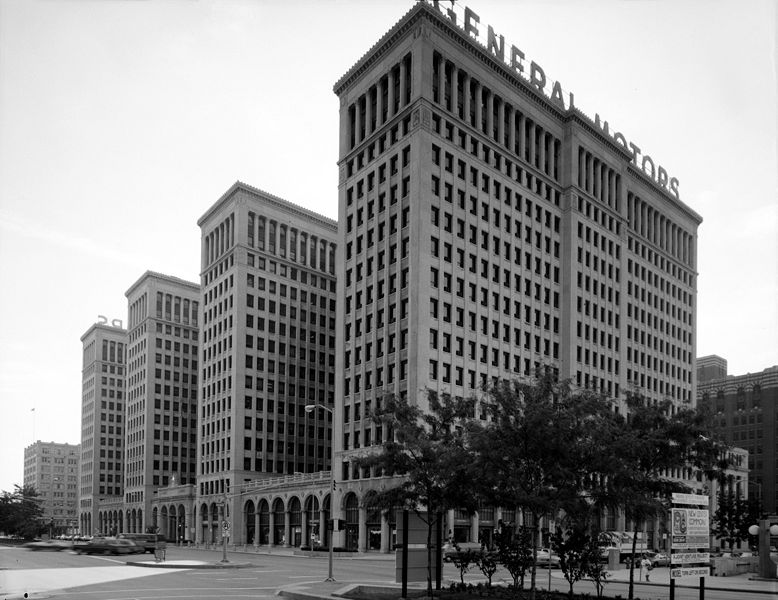<Back to Index>
- Mathematician Jean Baptiste Joseph Fourier, 1768
- Architect Albert Kahn, 1869
- President of Mexico Benito Pablo Juarez Garcia, 1806
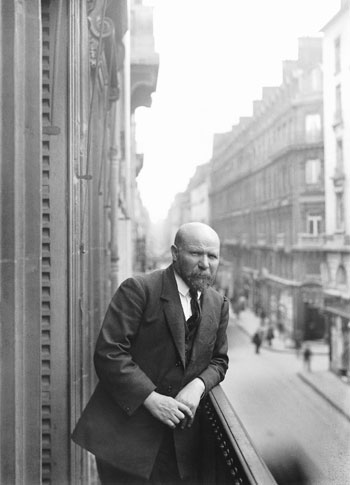
Albert Kahn (March 21, 1869 Rhaunen, Rhineland-Palatinate, Germany – December 8, 1942 Detroit, Michigan, USA) was the foremost American industrial architect of his day. He is sometimes called, the architect of Detroit.
He was born on March 21, 1869 in Rhaunen, Rhineland-Palatinate, Germany. Kahn came to Detroit in 1880 at the age of 11. His father Joseph was trained as a rabbi. His mother Rosalie had a talent for the visual arts and music. As a teenager he got a job at the architectural firm of Mason and Rice. Kahn won a year's scholarship to study abroad in Europe, where he toured with another young architecture student, Henry Bacon, who would later design the Lincoln Memorial in Washington, D.C.
The architectural firm Albert Kahn Associates was founded in 1895. He developed a new style of construction where reinforced concrete replaced wood in factory walls, roofs, and supports. This gave better fire protection and allowed large volumes of unobstructed interior. Packard Motor Car Company's factory built in 1907 was the first development of this principle. The success of the Packard plant interested Henry Ford in Kahn's designs. Kahn designed Ford Motor Company's Highland Park plant, begun in 1909 where Ford consolidated production of the Ford Model T and perfected the assembly line. On Bob-Lo Island, Henry Ford had a dance hall designed and built by Albert Kahn, which in 1903 was billed as the world's second largest. Kahn later designed, in 1917, the massive half-mile-long Ford River Rouge Plant. The Rouge grew into the largest manufacturing complex in the U.S., with a force that peaked at 120,000 workers. According to the company website, "By 1938, Kahn's firm was responsible for 20 percent of all architect-designed factories in the U.S."
Kahn was responsible for many of the buildings and houses in Walkerville, Ontario built
under direction of Walker family including Willistead Manor. Kahn's
interest in historically styled buildings is also seen in his houses in Indian Village, Detroit, Cranbrook House, the Edsel Ford House and the Dearborn Inn, the world's first airport hotel. Kahn also designed the landmark 28-story Art Deco Fisher Building in
Detroit, considered one of the most beautiful elements of the Detroit
skyline. In 1928, the Fisher building was honored by the Architectural League of New York as the year's most beautiful commercial structure. Kahn's firm's Moscow office built 521 factories between 1930 and 1932. Kahn
also designed many of the classic buildings at the University of
Michigan at Ann Arbor. These include the Burton Tower, Hill Auditorium,
the Hatcher Graduate Library, and Clements Library. A frequent collaborator with Kahn was architectural sculptor Corrado Parducci.
In all Parducci worked on about 50 Kahn commissions including banks,
office buildings, newspaper buildings, mausoleums, hospitals and
private residences. Kahn's firm designed a large number of the army airfield and naval bases for the United States government during World War I. By World War II, Kahn's 600-person office was involved in making Detroit the Arsenal of Democracy.
Among others, the office designed the Detroit Arsenal Tank Plant, and
the Willow Run Bomber Plant, Kahn's last building, located in Ypsilanti, Michigan, where Ford Motor Company mass produced B-24 Liberator bombers. Albert Kahn worked on more than 1,000 commissions from Henry Ford and hundreds for other automakers. As of 2006, Kahn had around 60 buildings listed on the National Register of Historic Places. Not all of Kahn's works have been preserved. The Donovan Building, later occupied by Motown Records was demolished as part of Detroit's beautification plan before the Super Bowl in 2006. Ten Albert Kahn buildings are recognized by official Michigan historical markers.
